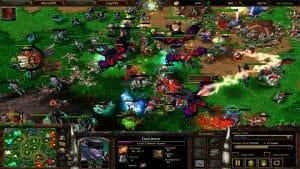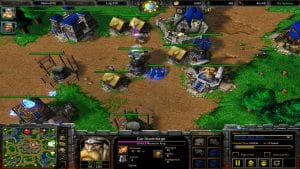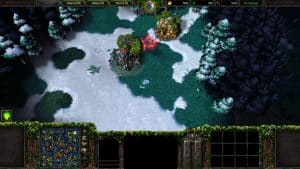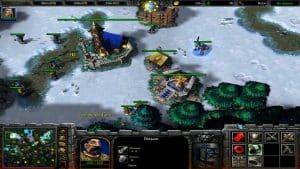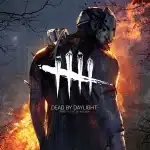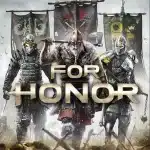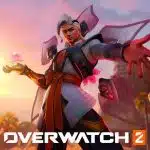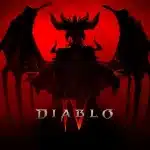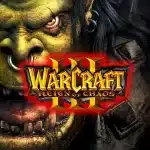Warcraft III: The Frozen Throne
Related Games
Description
🔥 What is Warcraft III: The Frozen Throne for PC?
Warcraft III: The Frozen Throne is a legendary real-time strategy expansion developed by Blizzard Entertainment that expands upon the acclaimed Warcraft III: Reign of Chaos. Released in 2003, it continues the saga of Azeroth with new campaigns, units, heroes, and mechanics that elevated the series into one of the most influential strategy games ever created. It serves both as a narrative continuation and a mechanical refinement, cementing Warcraft’s reputation as a cornerstone of modern PC gaming.
The story picks up after the events of Reign of Chaos, following the aftermath of the Burning Legion’s defeat. It explores the rise of Arthas as the Lich King, the struggles of the Night Elves to rebuild their lands, and the internal conflicts among the Orcs and Blood Elves. Each campaign offers a distinct tone and pacing, giving players insight into different sides of the war-torn world.
The Frozen Throne blends cinematic storytelling with complex, fast-paced strategy gameplay, introducing new hero abilities, dynamic mission objectives, and multiplayer refinements that would eventually inspire the birth of the MOBA genre. For fans of fantasy strategy, this expansion remains a defining chapter that shaped both narrative depth and tactical design for years to come.
👉 Features of Warcraft III: The Frozen Throne
Expanded Campaigns and Storylines
The Frozen Throne introduces multiple new story campaigns that expand on the lore of Azeroth. Players follow the journeys of iconic characters like Arthas, Illidan Stormrage, Maiev Shadowsong, and Kael’thas Sunstrider. Each campaign is distinct in both tone and structure, blending traditional base-building missions with more RPG-style scenarios.
The campaign structure offers variety and experimentation, often placing players in unusual situations, such as controlling limited hero-led forces or stealth-based missions. The storytelling combines voice acting, pre-rendered cinematics, and in-engine cutscenes that together form a cohesive and memorable narrative arc.
New Units and Heroes
Every race receives fresh additions to their armies, fundamentally changing tactical possibilities. Humans gain the spellcasting Blood Mage, Orcs welcome the Shadow Hunter, Night Elves receive the Warden, and Undead control the Crypt Lord. These heroes introduce fresh strategies and counterplay dynamics that deepen the game’s competitive layer.
New units like the Dragonhawk Rider, Spirit Walker, and Mountain Giant diversify army composition, allowing for richer experimentation and tactical creativity. Players must now adapt not only to terrain and economy but to entirely new power interactions between armies.
Neutral Heroes and Taverns
One of the most impactful additions to The Frozen Throne is the introduction of neutral heroes available for hire from Taverns. This innovation transformed multiplayer gameplay, adding new layers of unpredictability and strategy.
Neutral heroes like the Beastmaster, Dark Ranger, and Pandaren Brewmaster became iconic choices that allowed players to deviate from traditional race-specific strategies. This system enhanced variety and replayability, giving even experienced players new ways to surprise opponents.
Improved Multiplayer and Custom Maps
Blizzard enhanced Battle.net integration and matchmaking, improving multiplayer balance and connectivity. The Frozen Throne quickly became a hub for competitive play, fostering a massive esports community that endured for decades.
Equally transformative was the upgraded World Editor, empowering fans to create custom maps and entirely new game modes. This tool gave birth to user-made classics such as Defense of the Ancients (DotA), which later evolved into its own global phenomenon.
Visual and Audio Enhancements
While based on the same engine as Reign of Chaos, The Frozen Throne introduced sharper textures, new animations, and improved spell effects that made battles more vivid. The soundtrack, composed by Blizzard’s in-house team, combines orchestral themes with ambient tension that enhances both the epic and emotional moments.
Voice acting remains one of the strongest elements, bringing life and personality to every faction. From Arthas’s descent into madness to Illidan’s tragic ambition, performances elevate the drama and atmosphere of every mission.
Gameplay
Deep Strategy and Hero Mechanics
Warcraft III: The Frozen Throne deepens the hero-centric gameplay introduced in its predecessor. Heroes gain experience, level up, and acquire powerful abilities that can turn the tide of battle. Managing these heroes protecting them, timing their ultimates, and coordinating their items becomes as important as controlling entire armies.
The mix of RPG progression and real-time tactics creates constant tension between risk and reward. Losing a hero can devastate a match, while an experienced hero can dominate entire enemy forces. This balance is what gives the game its enduring complexity and replay value.
Faction Diversity and Unit Synergy
Each of the four main factions feels distinct, from the resource-heavy Undead Scourge to the mobile Night Elves. The expansion’s new units encourage creative synergy, such as combining Blood Mages’ mana-draining spells with Paladins’ sustain abilities or pairing Shadow Hunters with Troll Headhunters for devastating ranged assaults.
Players must master timing, resource management, and micro-control to succeed. Advanced players use stutter-stepping, spell chaining, and precise positioning to maximize efficiency in both skirmishes and massive engagements.
Campaign Missions and Challenge Variety
The campaign design mixes traditional base-building with creative mission structures. Some missions have you escorting heroes through labyrinthine dungeons, while others challenge you to defend against endless waves or explore massive open maps.
Each act feels like a miniature story within the greater narrative. The pacing shifts between intense, large-scale wars and quieter, story-driven interludes, ensuring constant engagement and variety throughout the campaign experience.
Custom Games and Map Creation
The upgraded World Editor turned The Frozen Throne into one of the most enduring creative sandboxes in PC gaming history. Players could design custom units, triggers, and maps that rivaled professional games in depth and polish.
This editor not only extended the life of the game but also laid the groundwork for entirely new genres. Many modern titles, from MOBAs to tower defense games, trace their roots back to this community-driven innovation.
Graphics
Classic Fantasy Art Direction
The Frozen Throne maintains Blizzard’s distinct hand-painted style that focuses on clarity and exaggerated proportions rather than realism. Every building, unit, and hero is instantly recognizable, which is crucial for real-time strategy readability.
Color palettes differ across races the lush greens of Night Elf forests, the grim blues of the Undead, and the earthy tones of the Orcish Horde all contributing to a strong sense of identity and atmosphere within each campaign.
Improved Effects and Animations
Spellcasting, weather effects, and unit abilities received noticeable upgrades. Lightning storms, fire spells, and summoning rituals all burst with energy and detail that emphasize the game’s magical intensity.
The fluidity of unit movement and combat animations also improved, making large-scale battles easier to follow and more cinematic. The game strikes a balance between spectacle and clarity that few RTS titles have matched since.
Cinematic Presentation and Sound Design
Blizzard’s pre-rendered cinematics remain among the best in the genre, serving as emotional anchors that elevate the storytelling. The opening cinematic showing Arthas ascending the Frozen Throne is still considered one of the most iconic moments in PC gaming.
The soundtrack supports every emotional beat, blending war drums, haunting choral themes, and ambient environmental cues that immerse players in Azeroth’s world. Sound effects from sword clashes to spell bursts retain a tactile, satisfying impact.
Pros and Cons
✔️ Pros
- Deep, hero-driven strategy combining RPG and RTS elements with remarkable balance.
- Epic and emotional storytelling that expands the Warcraft universe meaningfully.
- Powerful World Editor that inspired entire new genres and fan communities.
- Distinct factions with rich mechanics and strategic diversity.
- Timeless cinematic presentation and excellent sound design.
❌ Cons
- Outdated graphics by modern standards despite their stylistic charm.
- High skill ceiling and steep learning curve for newcomers.
- Limited quality-of-life features compared to modern RTS titles.
- Some campaign missions can feel uneven in pacing or difficulty.
ℹ️ Game information
Release Date: 01/07/2003
Update Date: 15/10/2025
Version: v1.0
Genre: Strategy
Platform: PC
Language: ![]()
![]()
![]()
![]()
![]()
![]()
![]()
![]()
Weight: 550 MB
Additional info: New version includes all DLCs to date
⭐ Installation Instructions
- The game is fully complete, you just need to install it, so there is no need to unpack it or download it from other sources.
- Just run the Warcraft III: The Frozen Throne.exe installation file.
- Simply launch the game from shortcut desktop.
⚙️ System Requirements
✅ Minimum:
- OS: Windows 98/ME/2000/XP
- Processor: Pentium II 400MHz/Athlon
- Memory: 128 MB RAM
- Graphics: 8 MB 3D Video Card with DirectX 8.1 support
- DirectX: Version 8.1
- Network: Broadband Internet connection
- Storage: 550 MB available space
✅ Recommended:
- OS: Windows 98/ME/2000/XP
- Processor: Pentium III 600MHz/Athlon
- Memory: 256 MB RAM
- Graphics: 32 MB 3D Video Card with DirectX 8.1 support
- DirectX: Version 8.1
- Network: Broadband Internet connection
- Storage: 550 MB available space
Images
